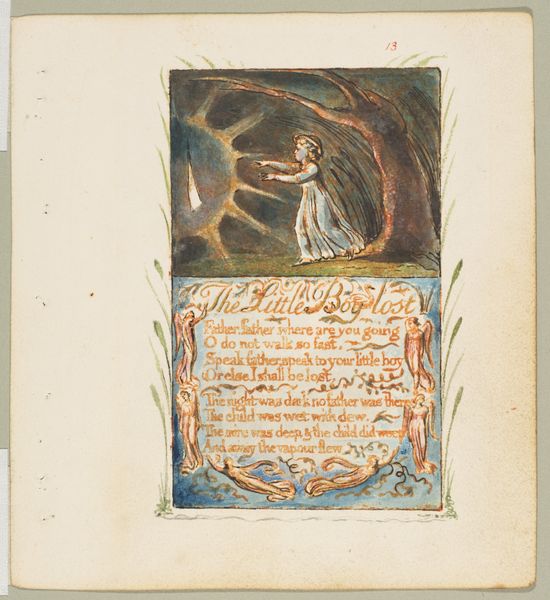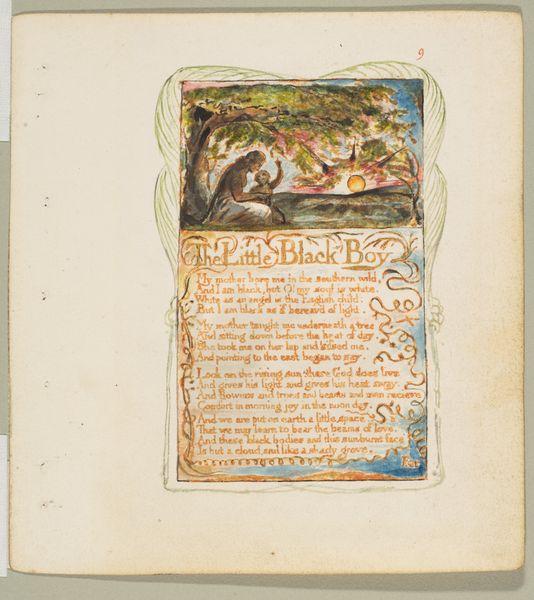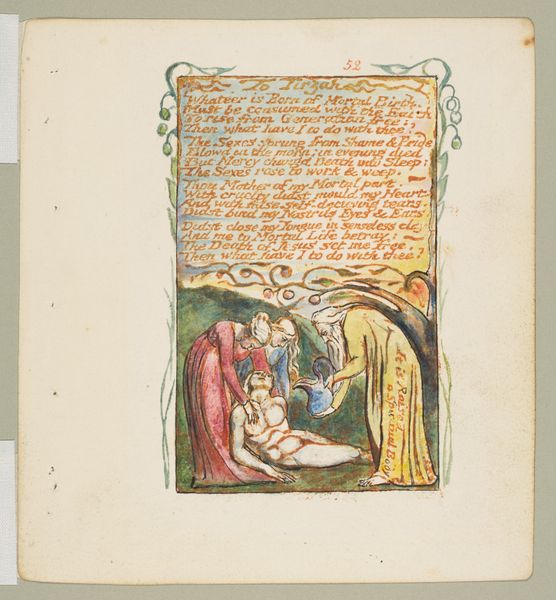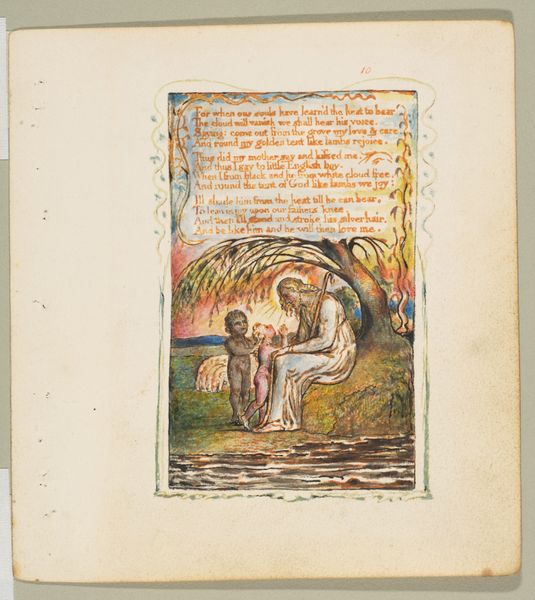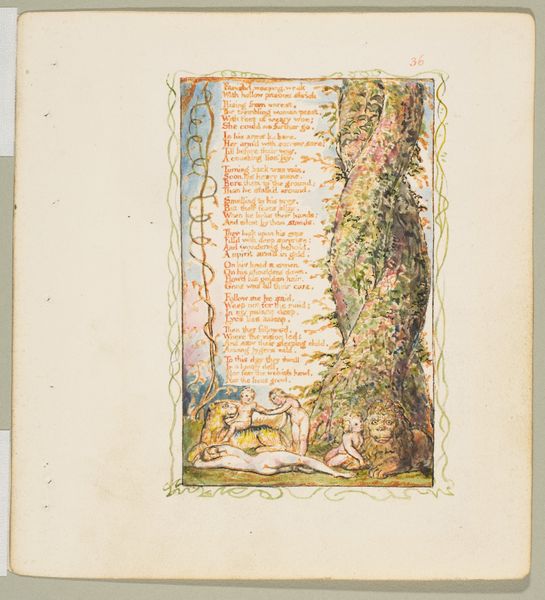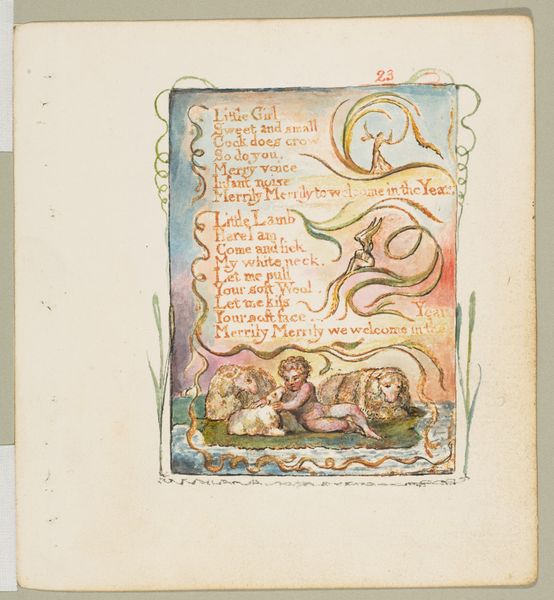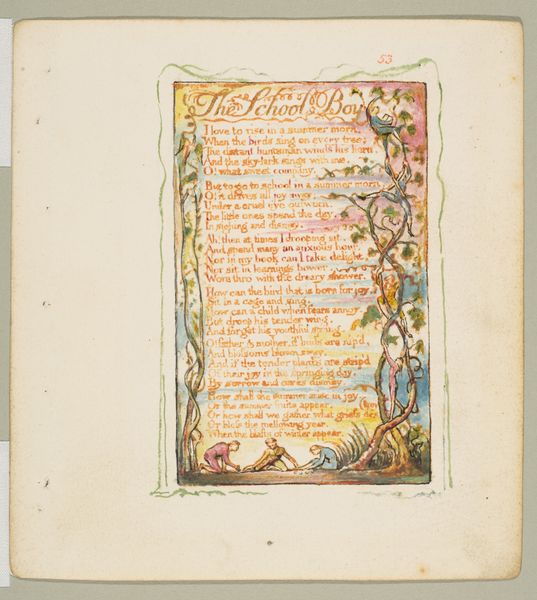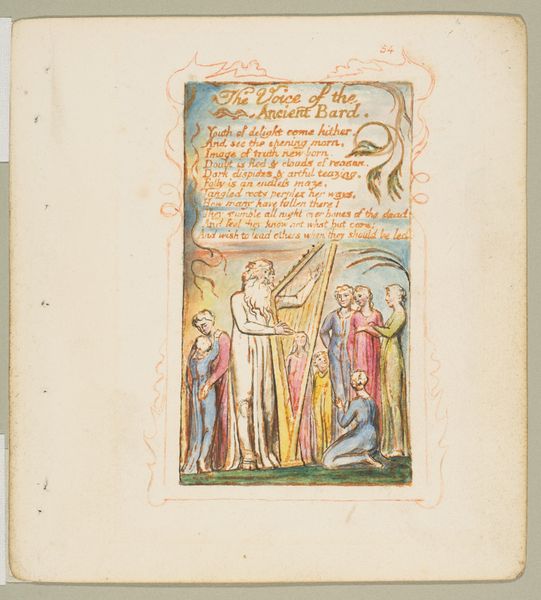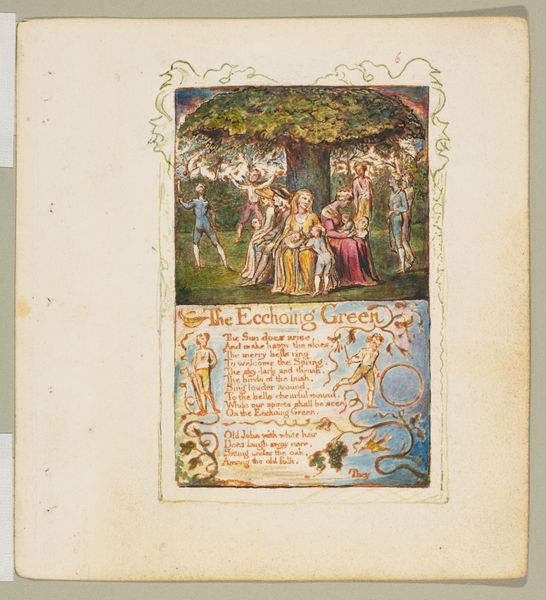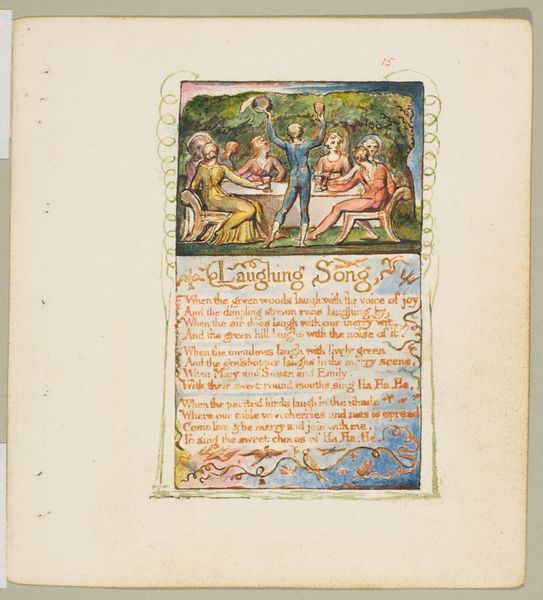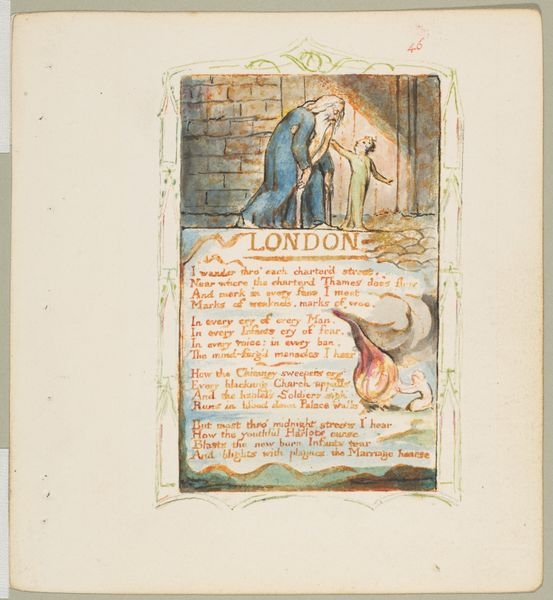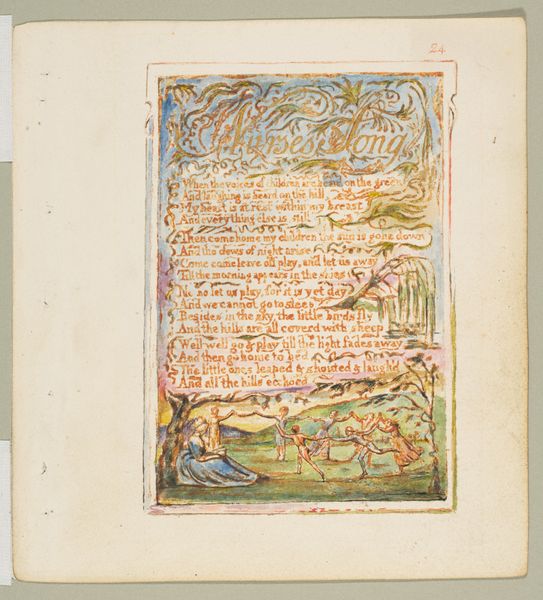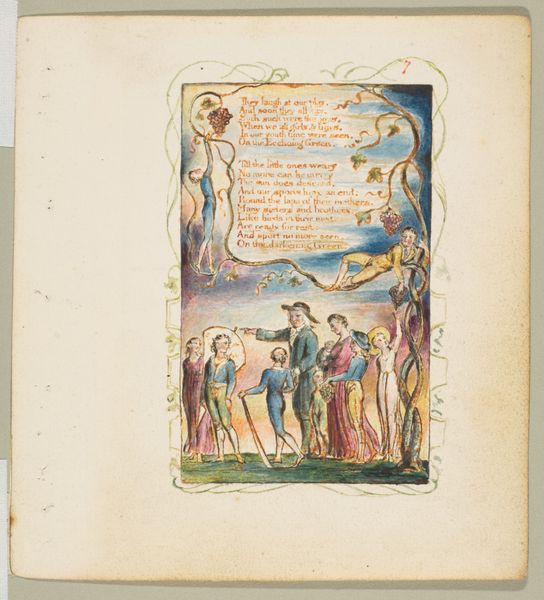
drawing, print, paper, watercolor
#
portrait
#
drawing
#
water colours
#
narrative-art
# print
#
landscape
#
figuration
#
paper
#
watercolor
#
romanticism
#
watercolour illustration
Dimensions: sheet: 6 3/16 x 5 9/16 in. (15.7 x 14.1 cm)
Copyright: Public Domain
Curator: There's such a compelling intimacy in William Blake's "Songs of Innocence: The Little Boy Found," completed between 1789 and 1825, currently residing here at the Met. What strikes you first about it? Editor: Immediately, it’s the luminous quality. The watercolor washes create this ethereal, almost dreamlike state. The figures are rendered with a deliberate lack of sharp lines, enhancing the sense of a vision or memory. Curator: Precisely. And considering Blake’s radical politics, this depiction of a divine intervention—almost a figure of patriarchal authority leading the lost child—can be interpreted as a commentary on the societal structures of his time. God appearing “like his father in white” speaks volumes about inherited power. Editor: I see your point about power structures, but from a formal perspective, it's the rhythmic balance that holds my attention. The text beneath the image echoes the composition above, mirroring the verticality of the trees with the ascending script. It's a self-contained visual and textual harmony. Curator: But even that "harmony" has underlying tensions. The poem details the mother's sorrow and searching, a counter-narrative to the seemingly straightforward rescue. Blake was deeply invested in portraying the complexities of innocence and experience. Consider, too, the way he combines printmaking with watercolor, blurring the lines between mass production and unique artistry, much like he blurs the lines of traditional social hierarchies in his writing. Editor: True, the tension between text and image generates layers of meaning. However, I also can't help but appreciate the aesthetic decisions—the careful placement of color, the rhythmic quality of the line work. Blake clearly understood how to communicate emotion and ideas through visual form. Curator: His radical stance as a poet, painter, and printmaker who engaged in politics has a deep resonance, challenging viewers to reconsider conventional religious and societal assumptions. Editor: And viewing that radicalism through his innovative visual choices only serves to amplify it, for sure. It creates such a complex piece.
Comments
No comments
Be the first to comment and join the conversation on the ultimate creative platform.
